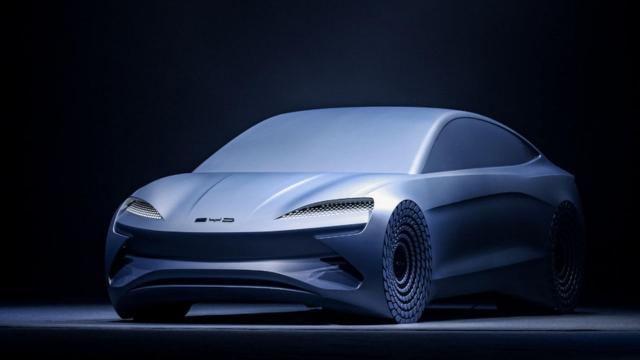Nvidia is really making itself known in the automotive space, with a range of announcements today off the back of GTC, Nvidia’s innovative technology conference.
What’s Nvidia, a graphics card company (behind the much loved RTX 30 series), doing making automotive tech, I hear you say? Well, Nvidia has actually been at it for a while now.
Earlier this year, we reported that Nvidia was entering a partnership with Jaguar Land Rover to provide smarter operating systems for their cars. Back then, Nvidia only had a few partnerships with car companies to provide tech like this.
Now, the company says Nvidia Drive Orin has become the “choice AI compute platform for 20 of the top 30 passenger electric vehicle makers in the world”.
“Future cars will be fully programmable, evolving from many embedded controllers to powerful centralised computers — with AI and AV functionalities delivered through software updates and enhanced over the life of the car,” added Jensen Huang, the founder and CEO of Nvidia.
“Nvidia Drive Orin has been enormously successful with companies building this future, and is serving as the ideal AV and AI engine for the new generation of EVs, robotaxis, shuttles and trucks.”
Perhaps the biggest announcement is that Nvidia is beginning the production of Nvidia Drive Orin, which is actually a smart vehicle chip. I’m pretty keen to see how Nvidia will shake up the smart car space with this chip. Drive Orin allows for up to 254 trillion operations per second, keeping your vehicle’s operating system responsive during high-pressure situations.
Nvidia also revealed the next step of its Hyperion autonomous vehicle architecture, the Hyperion 9, set to enter production in 2026, while the Hyperion 8 architecture entered production just recently.
Drive Hyperion is “a production-ready platform for autonomous vehicles,” according to the Nvidia website. The current version, Hyperion 8, uses 12 exterior cameras, three interior cameras, nine radars, 12 ultrasonic and a front-facing lidar (along with lidar for ground data collection) to enable autonomous driving.
Hyperion 9, however, offers a bit of an upgrade: 14 exterior cameras, nine radars and 20 ultrasonic sensors will make up the Hyperion 9 framework, along with the lidar and interior cameras of Hyperion 8.
Nvidia has also announced that it’s going to map 500,000 kilometres of road across the world by 2024, creating an “Earth-scale digital twin with centimetre-level accuracy”. This should enhance autonomous car performance, by giving road data to go off when the car is moving. North America, Europe and Asia will be getting mapped roads first, with the map being continuously updated.
Additionally, the company has announced a partnership with Lucid Group, a relatively new EV company, and BYD, a Chinese EV company that announced its first Australian car earlier this year.
Nvidia revealed that Lucid’s new DreamDrive Pro advanced driver-assistance system will be built on the Nvidia Drive Hyperion framework, which will allow the car to receive over-the-air software updates, along with the smart car features of Nvidia’s Hyperion framework (automated parking, driver assistance and so on). We’re unlikely to see a Lucid car come to Australia anytime soon, but from what we can tell, it’s a fine automobile.
It was also revealed that new BYD EVs will be built on Nvidia’s Drive Hyperion system, starting in 2023, using the Drive Orin framework. Other EV companies, like Polestar, have also been announced as adopters of the Nvidia smart car framework. The partnership with Polestar was initially teased out earlier this month.
Other automotive brands will also be using the Nvidia smart car framework in their upcoming fleets of vehicles. This includes NIO, Li Auto, XPeng, IM Motors, R Auto, JiDU, Human Horizons, VinFast and WM Motor.
It might be some years before we see self-driving cars become legal in Australia. That said, the smart features that Nvidia Drive Orin and Nvidia Hyperion could offer Aussie drivers might be something to look out for.
The big takeaway from all this is that Nvidia wants to be a major player in the smart car world. Considering all the deals the company has made, with the likes of Mercedes-Benz and Jaguar Land Rover, Nvidia could become a staple of the future automotive world.
